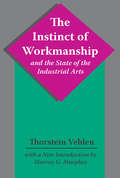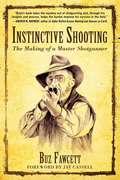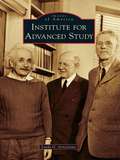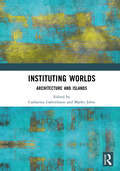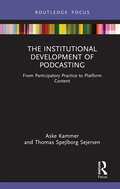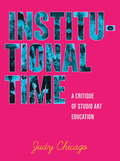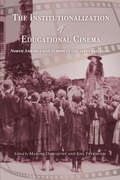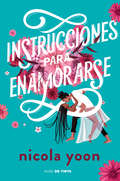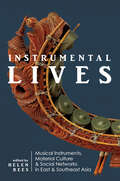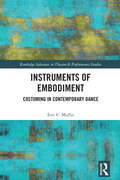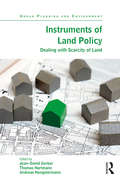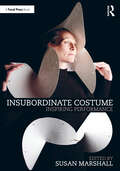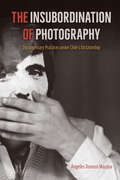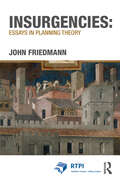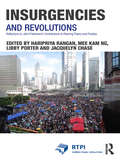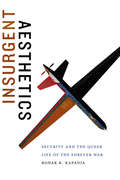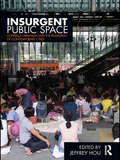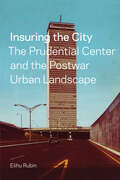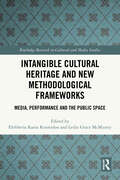- Table View
- List View
Instead of Watching TV: 99 Activities to Help Kids Unplug
by Anna HueteRecent studies have shown that children's in today's world spend more than three hours daily in front of the TV. Educators suggest that this habit causes obesity, and apathy in children. What can we do?Instead of Watching TV offers kids alternatives to TV or videogames. These ideas permits parents to enjoy a few minutes at our children's sides and the means for kids to enjoy themselves on their own as well.Some of the activities include understanding the phases of the moon through a game, how to make a "telephone," and how to create an animated book. Instead of watching "the idiot box," children 4 to 12 years old can discover, communicate, and learn: Simple and fun crafts Games for inside the house Cooking recipes for kids Safe scientific experiments
The Instinct of Workmanship and the State of the Industrial Arts
by Thorstein VeblenThe Instinct of Workmanship and the State of the Industrial Arts, originally issued in 1914, is described by Murray Murphey as his "most important work." In this volume that the theoretical foundations are put forth on full display. Veblen's juxtaposition of the instinctive values of community welfare in contrast to the pecuniary values of commercial exchange was the basis of his later, more famous works. The book makes plain Veblen's basic dichotomy between technological institutions for making goods and the pecuniary institutions for making money.Veblen's book is taken up with the casual processes in the history of culture centered on human instincts and habits. For him, a change in the natural or social conditions produces effects only by changing the behavior of people. The whole panoply of habits, instincts, and motives, points to a theory of social and cultural change which substantially differs from the pragmatic tradition that swept America in the early decades of this century. Veblen makes so many unique contributions and insights that his work outlives the limitations of its theoretical shell.As is the case for most Veblen's works, footnotes and references are sparse, no index is provided, and the reader is left to fill in the missing paraphernalia the way one does with a novel. Indeed, the reader is swept along Veblen's captivating rhetoric in seven brilliant chapters moving from the instincts in primitive technology, to the current state of industrial arts, to the examination of predatory culture invited to the civilizational table by the competitive system, and finally into a contrast of handicrafts and machine industry.Veblen offers a dramaturgy and a morality of the industrial order of his time: much has changed, but a great deal remains the same and is easily identifiable by the discerning reader. In this passage through text and time, Murphey is the perfect guide, displaying a keen knowledge of philosophy, psychology
Instinctive Shooting: The Making of a Master Shotgunner
by Buz FawcettLearn to point and shoot like a pro with these easy-to-follow tips.“Here, point and shoot.” These words from his father propelled Buz Fawcett’s shooting success as a child, gaining him a number of High Gun awards at local trap clubs by the time he was fourteen. Instinctive Shooting is Fawcett’s guide for other gunmen, describing exactly how and what needs to be done to achieve the ultimate shooting instincts. Practical and hands-on, the book covers such topics as:Determining your dominant eyeAchieving proper shotgun fitHow to correct point and shootSelecting equipmentPractice regimensCare, cleaning, and maintenanceMuch more!Whether you’re looking to improve your success out in the field or on the sporting course, Buz Fawcett’s time tested advice is an eye-opening look at an approach that can help all shotgunners. Experienced shooters who hunt birds, deer, and big game as well as clays and skeet sportsmen looking for a new approach or just an extra edge should take a look at Instinctive Shooting.
Institute for Advanced Study
by Linda G. ArntzeniusFounded in 1930, the Institute for Advanced Study was conceived of high ideals for the future of America and its system of higher education, and was made possible by sibling philanthropists Louis Bamberger and Caroline Bamberger Fuld. Guided by education expert Abraham Flexner, the Bambergers created an independent institution devoted to the pursuit of knowledge. The Institute for Advanced Study opened its arms to scholars "without regard to race, creed, or sex." It provided a haven for Jewish intellectuals fleeing Nazi Germany, including Albert Einstein, who remained on the permanent faculty until his death in 1955, and became the intellectual home of such luminaries as J. Robert Oppenheimer, John von Neumann, Kurt Gödel, Marston Morse, Oswald Veblen, Hermann Weyl, Homer A. Thompson, Erwin Panofsky, George F. Kennan, Clifford Geertz, and Freeman Dyson.
Instituting Worlds: Architecture and Islands
by Catharina Gabrielsson Marko JobstIslands have a long history of appealing to the architectural imagination and have served as sites for architectural expressions of cultural specificity, cultural conquest, and cultural hybridisation over millennia. From offshore financial centres to immigrant detention camps, tourist havens to military bases, the architectures of islands concretise the forces at play in our contemporary, crisis-ridden societies.Collecting writings by a wide range of established scholars together with exciting new voices in architecture and affiliated disciplines, this book shows the pertinence islands hold for critical spatial thinking and practice today. Covering war and colonialism, detention and tourism, the topics raised in this book range from issues of urban development to close readings of buildings – whether ruined, designed, projected, preserved, or absent. Combing case studies, critical historiography, and pieces of experimental writing, the chapters disclose the variety of ways in which architecture can be used as a lens for analysing, disclosing, and untangling island specificity.This volume offers a very timely, vibrant, and methodologically varied approach to the subject of architecture and islands. Its global reach, innovative outlook, and rich material will be of interest to scholars and students in architecture, landscape architecture, geography, and urban design and planning, alongside arts and literary studies.
Institutional Change for Museums: A Practical Guide to Creating Polyvocal Spaces (Routledge Guides to Practice in Museums, Galleries and Heritage)
by Marianna Pegno Kantara SouffrantInstitutional Change for Museums: A Practical Guide to Creating Polyvocal Spaces demonstrates how museums can enact institutional change by implementing systematic and structural approaches to anti-racist, anti-colonial, and anti-elitist practices.This practical guide brings together museum and heritage experts, artists, organizers, and cultural workers to present thoughtful, polyvocal critiques and solutions for conceptualizing museums of the future. These authors embrace hybrid identities, complicate concepts of nationalism, straddle disciplines, and extend the concept, function, and literal place and definition of the “museum.” The book shows that museums must cultivate practices that center people, interrogate colonial legacies, take new approaches to curatorial ethics and caring for objects, and imagine new strategies for asserting the relevance of museums, to create institutional change. This resource challenges traditional approaches to museology by offering scholarly research and case studies alongside personal narratives and speculative fiction.Institutional Change for Museums will be an invaluable resource for museum professionals and cultural workers, including curators, educators, and researchers. It will also be beneficial to those studying or researching in Museum and Heritage Studies, Cultural Studies, Feminist Studies, Visual Culture, Social Justice, and Postcolonial Studies.
The Institutional Development of Podcasting: From Participatory Practice to Platform Content (Disruptions)
by Aske Kammer Thomas Spejlborg SejersenReferring back to the early 2000s, this book traces the development of podcasting from a “do-it-yourself” medium by amateurs into its current environment, where a wide variety of individuals, organizations, and platforms operate in an increasingly crowded and competitive market.Through original case studies of shows and platforms including "The Daily" and Spotify, the authors explore the processes and effects of commercialization, platformization, and datafication in the industry. Drawing on institutional theory and the growing body of scholarly literature about podcasting, they examine the shifts and reorientations in institutional logics that characterize podcasting and present the different types of actors that operate in the commercial and noncommercial podcast markets.The Institutional Development of Podcasting will be of interest to advanced students and researchers of audio media, journalism, and media industries.
Institutional Time
by Judy ChicagoA revered teacher and the most influential feminist artist of our time, Judy Chicago provides an autobiographical look at higher education in art, a must-read for aspiring artists and educators in studio art programs. How should women--and men--be prepared for a career in today's art world? For more than a decade, Judy Chicago has been formulating a critique of studio art education, in colleges or art schools, based upon observation, study, and, most importantly, her own teaching experiences, which have taken her from prestigious universities to regional colleges, and across the country from Cal Poly Pomona to Duke University and the University of North Carolina, Chapel Hill. Founder of the first program dedicated to feminist art, at California State University, Fresno, in 1970, she went on to initiate the Feminist Art Program at California Institute of the Arts with artist Miriam Schapiro, the first program at a major art school to specifically address the needs of female art students. Creator of the celebrated The Dinner Party, a monumental art installation now on permanent display at the Brooklyn Museum, Chicago reviews her own art education, in the 1960s, when she overcame sexist obstacles to beginning a career as an artist and became recognized as one of the key figures in the dynamic California art scene of that decade. She reviews the present-day situation of young people aspiring to become artists and uncovers the persistence of a bias against women and other minorities in studio art education. Far from a dry educational treatise, Institutional Time is heartfelt, and highly personal: a book that has the earmarks of a classic in arts education.
The Institutionalization of Educational Cinema: North America and Europe in the 1910s and 1920s
by Marina Dahlquist and Joel FrykholmEssays by scholars on how film has been used by schools, libraries, governments, and organizations for educational purposes.The potential of films to educate has been crucial for the development of cinema intended to influence culture, and is as important as conceptions of film as a form of art, science, industry, or entertainment. Using the concept of institutionalization as a heuristic for generating new approaches to the history of educational cinema, contributors to this volume study the co-evolving discourses, cultural practices, technical standards, and institutional frameworks that transformed educational cinema from a convincing idea into an enduring genre. The Institutionalization of Educational Cinema examines the methods of production, distribution, and exhibition established for the use of educational films within institutions—such as schools, libraries, and industrial settings—in various national and international contexts and takes a close look at the networks of organizations, individuals, and government agencies that were created as a result of these films’ circulation. Through case studies of educational cinemas in different North American and European countries that explore various modes of institutionalization of educational film, this book highlights the wide range of vested interests that framed the birth of educational and nontheatrical cinema.
The Institutionalization of Educational Cinema: North America and Europe in the 1910s and 1920s
by Marina Dahlquist and Joel FrykholmEssays by scholars on how film has been used by schools, libraries, governments, and organizations for educational purposes.The potential of films to educate has been crucial for the development of cinema intended to influence culture, and is as important as conceptions of film as a form of art, science, industry, or entertainment. Using the concept of institutionalization as a heuristic for generating new approaches to the history of educational cinema, contributors to this volume study the co-evolving discourses, cultural practices, technical standards, and institutional frameworks that transformed educational cinema from a convincing idea into an enduring genre. The Institutionalization of Educational Cinema examines the methods of production, distribution, and exhibition established for the use of educational films within institutions—such as schools, libraries, and industrial settings—in various national and international contexts and takes a close look at the networks of organizations, individuals, and government agencies that were created as a result of these films’ circulation. Through case studies of educational cinemas in different North American and European countries that explore various modes of institutionalization of educational film, this book highlights the wide range of vested interests that framed the birth of educational and nontheatrical cinema.
Instrucciones para enamorarse
by Nicola YoonUn libro para enamorarse, incluso para los que ya no creen en el amor. Evie Thomas ya no cree en el amor. Cuando sus padres se separaron, todos sus ideales sobre el amor se esfumaron. Sin embargo, las casualidades de la vida la llevan a aprender a bailar en la Escuela de Baile La Brea, donde conoce a un enigmático chico. X es completamente opuesto a Evie: atrevido, pasional, sin miedo. El tipo de persona que dice sí a todo, incluso a apuntarse a una competición de bailes de salón con una chica que acaba de conocer. Enamorarse de X no es lo que Evie tenía en mente. Si su experiencia le ha enseñado algo, es que nadie escapa del amor sin resultar herido. Pero mientras Evie y X bailan y se conocen más, la magia del amor arrasa con todo. Instrucciones para enamorarse es la nueva novela de Nicola Yoon, la autora bestseller de las novelas Todo todo y El sol también es una estrella. Un libroperfecto para amantes del romance, y para fans de Todo este tiempo o Bajo la misma estrella.
Instrumental Lives: Musical Instruments, Material Culture, and Social Networks in East and Southeast Asia
by Helen Rees Jennifer C. Post Bell Yung Terauchi Naoko Tyler Yamin Maire-Pierre Lissoir Insee AdlerThe musical instruments of East and Southeast Asia enjoy increasing recognition as parts of humanity’s intangible cultural heritage. Helen Rees edits a collection that offers vibrant new ways to link these objects to their materials of manufacture, the surrounding environment, the social networks they form and help sustain, and the wider ethnic or national imagination. Rees organizes the essays to reflect three angles of inquiry. The first section explores the characteristics and social roles of various categories of instruments, including the koto and an extinct Balinese wooden clapper. In section two, essayists focus on the life stories of individual instruments ranging from an heirloom Chinese qin to end-blown flutes in rural western Mongolia. Essays in the third section examine the ethics and other issues that surround instrument collections, but also show how collecting is a dynamic process that transforms an instrument’s habitat and social roles. Original and expert, Instrumental Lives brings a new understanding of how musical instruments interact with their environments and societies. Contributors: Supeena Insee Adler, Marie-Pierre Lissoir, Terauchi Naoko, Jennifer C. Post, Helen Rees, Xiao Mei, Tyler Yamin, and Bell Yung
Instruments of Embodiment: Costuming in Contemporary Dance (Routledge Advances in Theatre & Performance Studies)
by Eric MullisInstruments of Embodiment draws on fashion theory and the philosophy of embodiment to investigate costuming in contemporary dance. It weaves together philosophical theory and artistic practice by closely analyzing acclaimed works by contemporary choreographers, considering interviews with costume designers, and engaging in practice-as-research. Topics discussed include the historical evolution of contemporary dance costuming, Merce Cunningham’s innovative collaborations with Robert Rauschenberg, and costumes used in Ohad Naharin’s Virus (2001) and in a ground-breaking Butoh solo by Tatsumi Hijikata. The relationship between dance costuming and high fashion, wearable computing, and the role costume plays in dance reconstruction are also discussed and, along the way, an anarchist materialism is articulated which takes an egalitarian view of artistic collaboration and holds that experimental costume designs facilitate new forms of embodied experience and ways of seeing the body. This study will be of great interest to students and scholars working in performance philosophy, philosophy of embodiment, dance and performance studies, and fashion theory.
Instruments of Land Policy: Dealing with Scarcity of Land (Urban Planning and Environment)
by Jean-David Gerber Thomas Hartmann Andreas HengstermannIn dealing with scarce land, planners often need to interact with, and sometimes confront, property right-holders to address complex property rights situations. To reinforce their position in situations of rivalrous land uses, planners can strategically use and combine different policy instruments in addition to standard land use plans. Effectively steering spatial development requires a keen understanding of these instruments of land policy. This book not only presents how such instruments function, it additionally examines how public authorities strategically manage the scarcity of land, either increasing or decreasing it, to promote a more sparing use of resources. It presents 13 instruments of land policy in specific national contexts and discusses them from the perspectives of other countries. Through the use of concrete examples, the book reveals how instruments of land policy are used strategically in different policy contexts.
Instruments of Planning: Tensions and challenges for more equitable and sustainable cities (RTPI Library Series)
by Rebecca Leshinsky Crystal LegacyInstruments of Planning: Tensions and Challenges for more Equitable and Sustainable Cities critically explores planning’s instrumentality to deliver important social and environmental outcomes in neoliberal planning landscapes. Because each instrument is unique and may be tailored to its own jurisdictional needs, Instruments of Planning is a compendium of case studies from urban regions in Australia, Canada, the United States and Europe, providing readers with a collection that critically challenges the role and potential of planning instruments and instrumentality across a range of contexts. Instruments of Planning captures the political, institutional, and economic challenges that confront planning. It examines planning instruments designed to assist with strategic planning and implementation, and considers the role that technology plays in unpacking and understanding complexity in planning. Written by Rebecca Leshinsky and Crystal Legacy of RMIT University in Melbourne, Australia, this book fills the gap in planning theory about the instrumentality of planning in the neoliberal urban context. It is essential reading for students, urban researchers, policy analysts and planning practitioners.
Instruments of Praise
by Kathy K. WylieAppliqué lovers, you can make this award-winning quilt Create your own version of Kathy Wylie's heavenly “Instruments of Praise,” which won the Bernina Machine Workmanship Award at the 2011 American Quilter's Society show and is now part of the National Quilt Museum’s permanent collection. With Kathy's tips on color selection, design placement, needle turn appliqué, and embellishing, you can make this quilt even if you aren’t an appliqué expert. • Full-sized pattern and instructions for 4 blocks and corner motif inspired by Psalm 150 • Each block features a different musical instrument • Recreate the original quilt, or mix and match blocks and motifs to make your own design
Insubordinate Costume: Inspiring Performance
by Susan MarshallInsubordinate Costume: Inspiring Performance presents a comprehensive study of historical and contemporary examples of scenographic costume – the type of costume that creates an almost complete stage environment by itself, simultaneously acting as costume, set and performance.This book provides readers with an overview of the costumes, designers, context and theory that have contributed to the emerging field of ‘costume as performance’. Focusing on artists and their creative approach to space, form, materials and movement, the book looks at iconic figures such as Loïe Fuller, Oskar Schlemmer and Leigh Bowery, amongst contemporary examples of practitioners that are blurring disciplinary boundaries between fashion, dance, performance and theatre. The book includes chapters by Dr Sofia Pantouvaki, who focuses on performance costume as a means of research; Christina Lindgren, who presents the findings of the four-year Costume Agency project at Oslo National Academy of the Arts in Norway; Charlotte Østergaard, who discusses the implications of 'Listening with costume' and Felix Choong, writing on 'Contemporary Runways, Contemporary Costumes'. The final part of the volume, 'The Practitioners’ Voice', examines current practice through interviews and contributions from key practitioners with an afterword by Dr Rachel Hann.Insubordinate Costume will appeal to professional costume designers, performance artists, dancers, directors, choreographers, fashion designers and theorists, teachers and students of these subjects. With its interdisciplinary focus and unique and dynamic content, this publication is relevant to a range of art, design and performance courses.
The Insubordination of Photography: Documentary Practices under Chile's Dictatorship (Reframing Media, Technology, and Culture in Latin/o America)
by Ángeles Donoso MacayaLatin American Studies Association Visual Culture Section Best Book PrizeLatin American Studies Association Historia Reciente y Memoria Section Best Book PrizeThe role of documentary photography in exposing and protesting the crimes of a dictatorship After Augusto Pinochet rose to power in Chile in 1973, his government abducted, abused, and executed thousands of his political opponents. The Insubordination of Photography is the first book to analyze how various collectives, organizations, and independent media used photography to expose and protest the crimes of Pinochet’s authoritarian regime. Ángeles Donoso Macaya discusses the ways human rights groups such as the Vicariate of Solidarity used portraits of missing persons in order to make forced disappearances visible. She also calls attention to forensic photographs that served as incriminating evidence of government killings in the landmark Lonquén case. Donoso Macaya argues that the field of documentary photography in Chile was challenged and shaped by the precariousness of the nation’s politics and economics and shows how photojournalists found creative ways to challenge limitations imposed on the freedom of the press.In a culture saturated by disinformation and cover-ups and restricted by repression and censorship, photography became an essential tool to bring the truth to light. Featuring never-before-seen photographs and other archival material, this book reflects on the integral role of images in public memory and issues of reparation and justice. A volume in the series Reframing Media, Technology, and Culture in Latin/o America, edited by Héctor Fernández L’Hoeste and Juan Carlos Rodríguez Publication of the paperback edition made possible by a Sustaining the Humanities through the American Rescue Plan grant from the National Endowment for the Humanities.
Insurgencies: Essays in Planning Theory (RTPI Library Series)
by John FriedmannFor nearly fifty years John Friedmann's writings have not just led the academic study of the discipline, but have given shape and direction to the planning profession itself. Covering transactive planning, radical planning, the concept of the Good City, civil society, rethinking poverty and the diversity of planning cultures, this collection of Friedmann's most important and influential essays tells a coherent and compelling story about how the evolution of thinking about planning over several decades has helped to shape its practice. With each essay given a new introduction to establish its context and importance, this is an ideal text for the study of planning theory and history.
Insurgencies and Revolutions: Reflections on John Friedmann’s Contributions to Planning Theory and Practice (RTPI Library Series)
by Haripriya Rangan Mee Kam Ng Libby Porter Jacquelyn ChaseOver the past six or more decades, John Friedmann has been an insurgent force in the field of urban and regional planning, transforming it from its traditional state-centered concern for establishing social and spatial order into a radical domain of collaborative action between state and civil society for creating ‘the good society’ in the present and future. By opening it up to theoretical engagement with a wide range of disciplines, Friedmann’s contributions have revolutionised planning as a transdisciplinary space of critical thinking, social learning, and reflective practice. Insurgencies and Revolutions brings together former students, close research associates, and colleagues of John Friedmann to reflect on his contributions to planning theory and practice. The volume is organized around five broad themes where Friedmann’s contributions have risen to challenge established paradigms and generated the space for revolutionary thinking and action in urban and regional planning – Theorising hope; Economic development and regionalism; World cities and the Good city; Social learning, empowered communities, and citizenship; and Chinese cities. The essays by the authors reflect their engagement with his ideas and the new directions in which they have taken these in their work in planning theory and practice.
Insurgent Aesthetics: Security and the Queer Life of the Forever War (Art History Publication Initiative)
by Ronak K. KapadiaIn Insurgent Aesthetics Ronak K. Kapadia theorizes the world-making power of contemporary art responses to US militarism in the Greater Middle East. He traces how new forms of remote killing, torture, confinement, and surveillance have created a distinctive post-9/11 infrastructure of racialized state violence. Linking these new forms of violence to the history of American imperialism and conquest, Kapadia shows how Arab, Muslim, and South Asian diasporic multimedia artists force a reckoning with the US war on terror's violent destruction and its impacts on immigrant and refugee communities. Drawing on an eclectic range of visual, installation, and performance works, Kapadia reveals queer feminist decolonial critiques of the US security state that visualize subjugated histories of US militarism and make palpable what he terms &“the sensorial life of empire.&” In this way, these artists forge new aesthetic and social alliances that sustain critical opposition to the global war machine and create alternative ways of knowing and feeling beyond the forever war.
Insurgent Public Space: Guerrilla Urbanism and the Remaking of Contemporary Cities
by Jeffrey HouWinner of the EDRA book prize for 2012. In cities around the world, individuals and groups are reclaiming and creating urban sites, temporary spaces and informal gathering places. These ‘insurgent public spaces’ challenge conventional views of how urban areas are defined and used, and how they can transform the city environment. No longer confined to traditional public areas like neighbourhood parks and public plazas, these guerrilla spaces express the alternative social and spatial relationships in our changing cities. With nearly twenty illustrated case studies, this volume shows how instances of insurgent public space occur across the world. Examples range from community gardening in Seattle and Los Angeles, street dancing in Beijing, to the transformation of parking spaces into temporary parks in San Francisco. Drawing on the experiences and knowledge of individuals extensively engaged in the actual implementation of these spaces, Insurgent Public Space is a unique cross-disciplinary approach to the study of public space use, and how it is utilized in the contemporary, urban world. Appealing to professionals and students in both urban studies and more social courses, Hou has brought together valuable commentaries on an area of urbanism which has, up until now, been largely ignored.
Insuring the City: The Prudential Center and the Postwar Urban Landscape
by Elihu RubinAn in-depth look at Boston's Prudential Center and what its story reveals about the evolution of the modern American city The Prudential Center anchors the Boston skyline with its tall, gray tower. It is also a historical beacon, representing a midcentury moment when insurance companies such as Prudential were particularly aware of how their physical presence and civic engagement reflected upon their intangible product: financial security. Looking to New York's Rockefeller Center, the creators of the Prudential Center aspired to use real estate development as a tool toward civic achievement, reinvigorating central Boston and integrating a large complex of buildings with new infrastructure for the automobile. Now available in paperback, this award-winning book tells the full story of “The Pru,” placing it in the political, economic, and architectural contexts of the period, and providing new insights into urban renewal in postwar America.
Insurrection: Star Trek Ix Movie Novelization (Star Trek )
by J M DillardAgainst a background of an idyllic and peaceful world of eternal youth, a damaged Data goes wild, shutting down the isolation devices which conceal a Federation observation post from the native Baku. Picard is informed by the Admiral Dougherty that Data has taken the observation team and a party of Son'a delegates hostage. Now Picard enters a race against time to shut Data down and rescue the hostages. But the hostages, who are growing younger, have no desire to leave and Picard finds himself facing a terrible conflict between his principles and his orders from Starfleet.
Intangible Cultural Heritage and New Methodological Frameworks: Media, Performance and the Public Space (Routledge Research in Cultural and Media Studies)
by Eleftheria Rania Kosmidou Leslie Grace McMurtryThis book examines media, performance, and the public space as sites of intangible cultural heritage – a heritage that moves beyond physical museums and monuments to encompass film and media, performing arts, oral traditions, social practices, rituals, artifacts, and cultural spaces.Focusing on the current methodological challenges and new frameworks that surround the study of intangible cultural heritage in the public space, this volume explores the ways in which intangible cultural heritage is formed, represented, appropriated, and changed. The authors propose a broad understanding of cultural heritage emerging from the public sphere, encompassing museums, oral traditions, performing arts, social practices, artifacts, media and cultural spaces as the inclusive, collective cultural expressions of everyday culture.This unique and interdisciplinary volume will interest scholars and students of cultural studies, cultural heritage, media and film studies, performance studies, history, and sociology.

